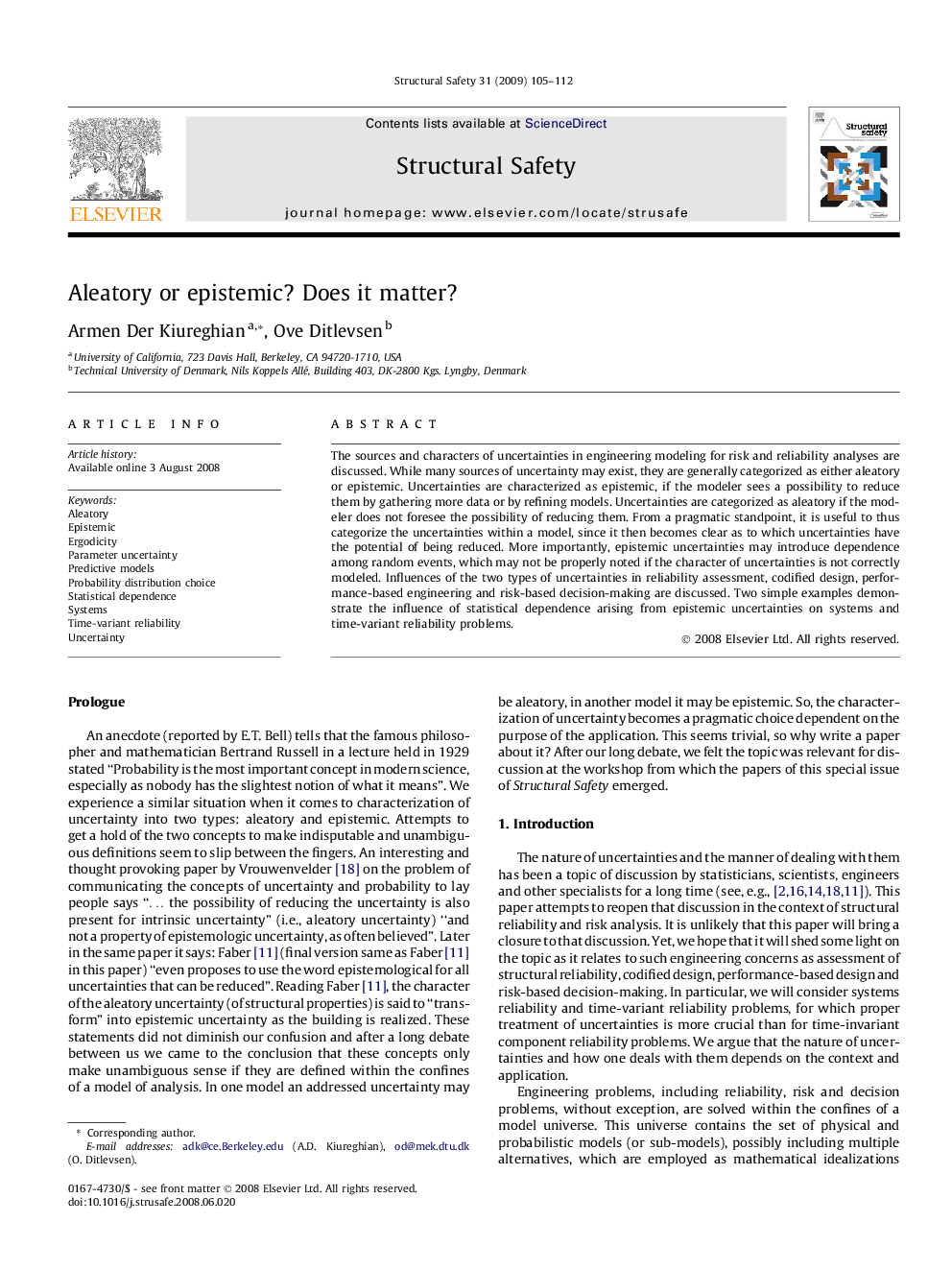| Article ID | Journal | Published Year | Pages | File Type |
|---|---|---|---|---|
| 307805 | Structural Safety | 2009 | 8 Pages |
The sources and characters of uncertainties in engineering modeling for risk and reliability analyses are discussed. While many sources of uncertainty may exist, they are generally categorized as either aleatory or epistemic. Uncertainties are characterized as epistemic, if the modeler sees a possibility to reduce them by gathering more data or by refining models. Uncertainties are categorized as aleatory if the modeler does not foresee the possibility of reducing them. From a pragmatic standpoint, it is useful to thus categorize the uncertainties within a model, since it then becomes clear as to which uncertainties have the potential of being reduced. More importantly, epistemic uncertainties may introduce dependence among random events, which may not be properly noted if the character of uncertainties is not correctly modeled. Influences of the two types of uncertainties in reliability assessment, codified design, performance-based engineering and risk-based decision-making are discussed. Two simple examples demonstrate the influence of statistical dependence arising from epistemic uncertainties on systems and time-variant reliability problems.
